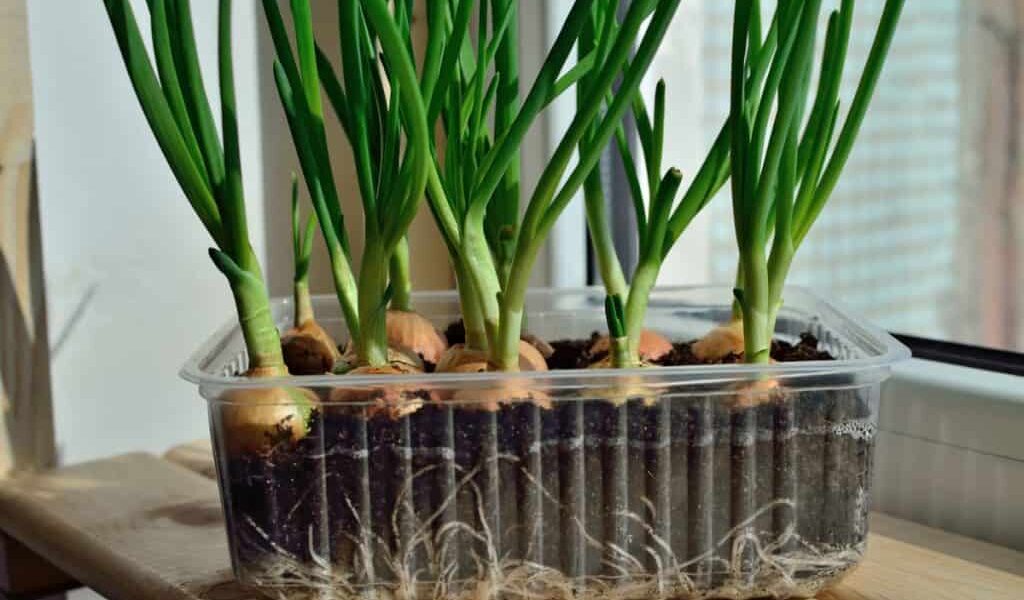Growing onions in pots at home is a straightforward process and can be a great way to have fresh onions on hand for your cooking needs. Here’s a step-by-step guide on how to grow onions in pots:
1. Choose the Right Container:
Select a deep container or pot with good drainage holes at the bottom. Onions need space for their roots to grow, so choose a container that is at least 8-10 inches deep.
2. Select Onion Varieties:
Choose onion varieties that are suitable for container gardening. Smaller varieties like green onions (scallions) or mini onions are often a good choice.
3. Soil Preparation:
Use a well-draining potting mix that is rich in organic matter. Onions prefer slightly acidic to neutral soil (pH around 6.0-7.0).
4. Planting Onions:
Plant onion sets or seeds. Onion sets are small, immature onions, and they are the easiest way to grow onions in pots.
Plant onion sets or seeds about 1 inch deep and 4-6 inches apart. If using sets, ensure the pointed end faces upward.
5. Watering:
Keep the soil consistently moist but not waterlogged. Onions need regular, even watering. Be mindful not to let the soil dry out completely, especially during hot weather.
6. Sunlight:
Place the container in a sunny location that receives at least 6-8 hours of direct sunlight daily. Onions require plenty of sunlight to grow bulbs.
7. Fertilizing:
Use a balanced, all-purpose fertilizer or one specifically formulated for root crops. Apply fertilizer according to the package instructions, typically every 3-4 weeks.
8. Thinning:
As your onions grow, you may need to thin them to ensure they have enough space to develop properly. Thin to a spacing of 4-6 inches between each plant.
9. Maintenance:
Keep an eye out for pests and diseases, and address any issues promptly. Onions are relatively low-maintenance, but they can be susceptible to pests like onion flies and diseases like onion rot.
10. Harvesting:
– Green onions can be harvested when they reach your desired size, typically when they are 6-8 inches tall. You can cut the leaves as needed, leaving the bulb to continue growing.
– For larger bulb onions, wait until the tops have yellowed and fallen over. Lift the bulbs carefully from the soil, let them dry in a well-ventilated area for a few weeks, and then store them in a cool, dry place.
11. Overwintering (Optional):
– In some climates, you may be able to overwinter onion pots by bringing them indoors or providing protection from freezing temperatures. This allows you to have fresh onions year-round.
Growing onions in pots can be a rewarding experience, especially if you have limited garden space. With proper care and attention to their needs, you can enjoy homegrown onions in your culinary creations.
